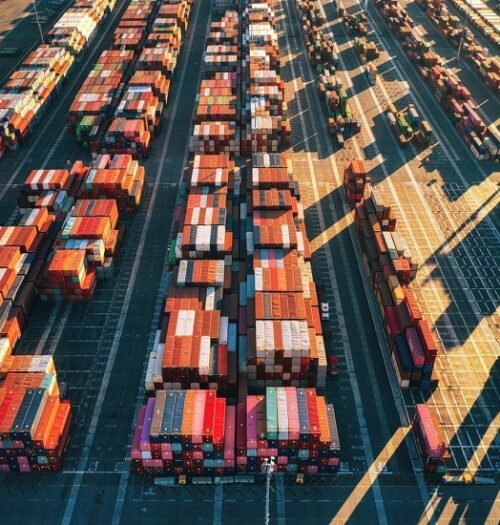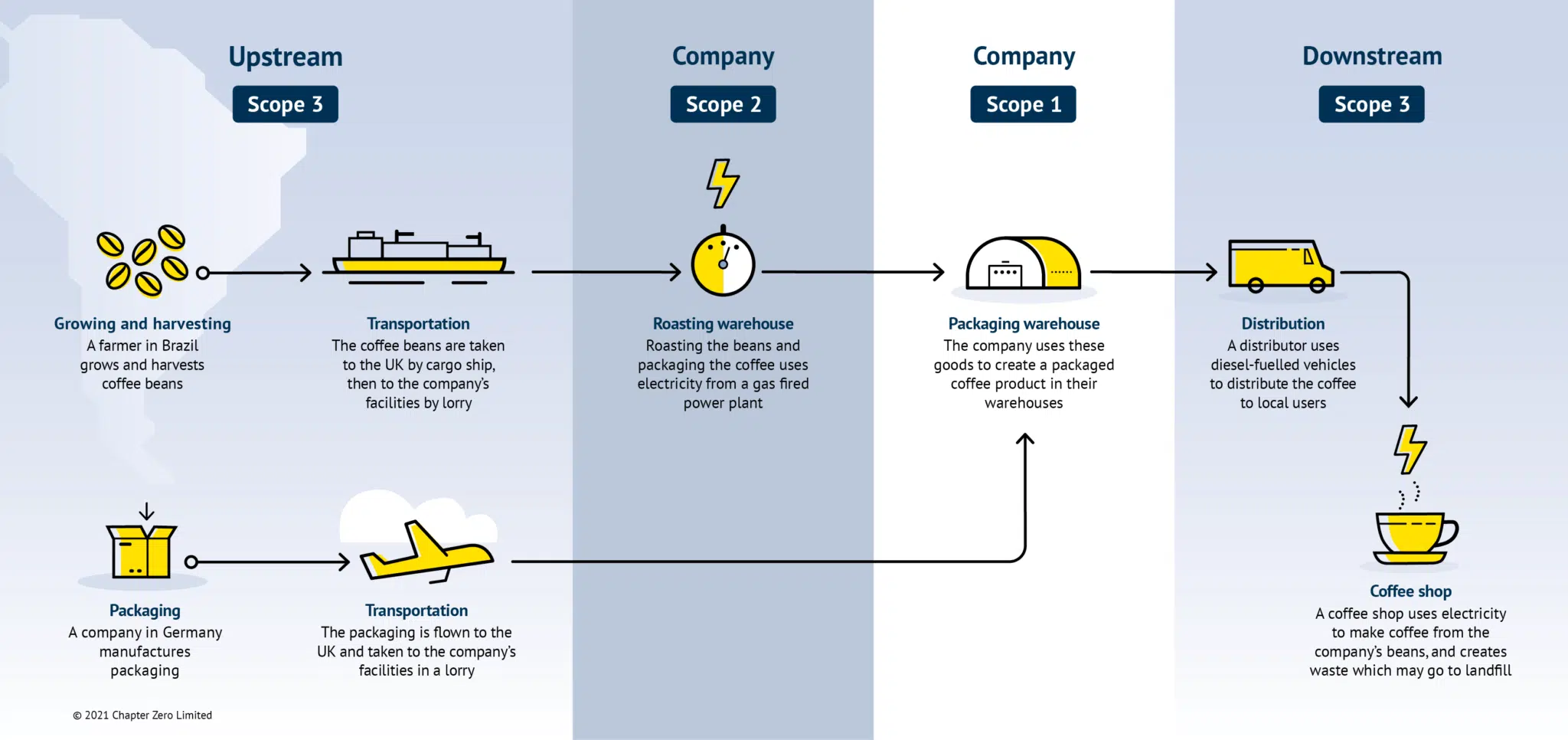
How to cut emissions in your supply chain
At a Chapter Zero event on 21 April 2021, Orna NiChionna, non-executive director at Burberry and Chapter Zero member, asked speakers from Tesco, Mondi and the British Retail Consortium for their insights on how to overcome this challenge.

Orna NiChionna
Non-executive director, Burberry
Anna Turrell
Head of Environment, Tesco
Gladys Naylor
Group Head of Sustainability, Mondi Group
Peter Andrews
Head of Sustainability Policy, British Retail ConsortiumFor most retailers, over 90% of greenhouse gas emissions are from Scope 3 sources. These emissions are created both upstream from supply chains, and downstream from distribution and use of a business’s products, including what happens at the end of a product’s life. There is a lot to learn from retailers and their supply chains on how to tackle Scope 3 emissions for businesses across all sectors.
But the causes of supply chain emissions are often outside the direct control of an individual business and/or are compounded by bigger systemic issues. How should a business approach these challenges to reach their emissions reductions targets and net zero ambitions?
At a recent Chapter Zero event, non-executive director (NED) at Burberry and member Orna NiChionna asked experts Peter Andrews from the British Retail Consortium, Anna Turrell from Tesco and Gladys Naylor from Mondi plc for their views. Here are a few of the insights they shared:
Collaboration is critical
Businesses will often count towards each other’s Scope 3 emissions. For example, if a manufacturer is the customer of a mining business and that mining business is part of the manufacturer’s supply chain, both would contribute to the other’s Scope 3 emissions. Collaboration across the supply chain becomes critical if both are going to reduce emissions. A business can use its influence and the relationships it has with its suppliers to lead emissions reductions for both. Anna Turrell highlighted this with Tesco’s Supplier Network, which acts as a central place for suppliers to get training, information and the help they need. There is a risk that suppliers may be overburdened if they are being bombarded with requests from lots of different customers so supporting them is key.
Another important reason for collaboration is that the issues businesses need to tackle are shared within and across industries and sectors. It is very unlikely a single business will overcome systemic barriers alone. These barriers may be to do with innovation, technology, socio-economic issues or regulation. As Peter Andrews mentioned, the British Retail Consortium’s Net Zero Roadmap for the Retail Industry is one such example of the precompetitive collective action that is needed, with over 70 retailers committed to drive it forward.

Scopes explained
For more information on Scope 3 emissions, read our guide
Scope emissions explainedData is important but it’s not the only thing that matters
A lot of climate and sustainability ambitions are driven by data and understanding what is of material importance for the business is vital. Third parties can help a business to produce a materiality assessment and understand their emissions profiles. This knowledge can inform decisions and ensure that risks and opportunities are adequately understood. Similarly, disclosure of financial risks is driving reporting for larger businesses and this can be hard to do for Scope 3 emissions and complex supply chains. A lot of the audit firms will be providing services to help with this.
Using frameworks to set ambition like the Science Based Targets Initiative can be one way to ensure that data and reporting is grounded in science and adequately robust. At the same time having a clear narrative is important, so where data is not yet available, not robust enough, or where a business isn’t taking action, it is crucial to be transparent. External stakeholders value credibility and don’t expect perfection.
Apply a top-down and bottom-up approach
The need to reduce supply chain emissions, and all Scope 3 emissions, should be of strategic importance for the board. Stakeholders, including customers, expect more now and a business could gain a competitive advantage for acting early.
The role of the board in setting a vision for the business and ensuring the strategy adequately addresses climate change is critical. Gladys Naylor shared that setting a clearly articulated vision with short, medium and long-term targets (for five years) helps support engagement in the whole business. Climate plans can’t just be top down – making sure that targets and metrics are integrated through a business so everyone is playing their part is important. This may include ensuring departments are trained in climate change or sustainability to understand what is involved to achieve the targets. This could enable innovation as teams are empowered to identify risks, opportunities and solutions in their areas of expertise.
What NEDs can do
Asking the right questions and ensuring credible actions are being taken is a critical role the non-executive director can play. This includes challenging the executive team to look at ambitious standards such as Science Based Targets. But it also includes showing employees who are driving climate ambitions that you are interested and supportive. As Anna said when asked what NEDs could do to help her do her job as a sustainability professional in business:
Be passionate. Lean in. Get curious. Reach out to us. We live and breathe sustainability. We want to make our companies better for the future. Support us along the way wherever you can.
The lessons from retailers who are tackling Scope 3 emissions head-on because of their significance to their emissions profiles are useful for any business. Collaboration, data and transparency, and leadership are vital to help address some of the challenges a business may face when cutting emissions in its supply chain. As Orna said when opening the discussion, ‘the art of possible is likely to be different than even two years ago… we can address risks and seize opportunities.’




